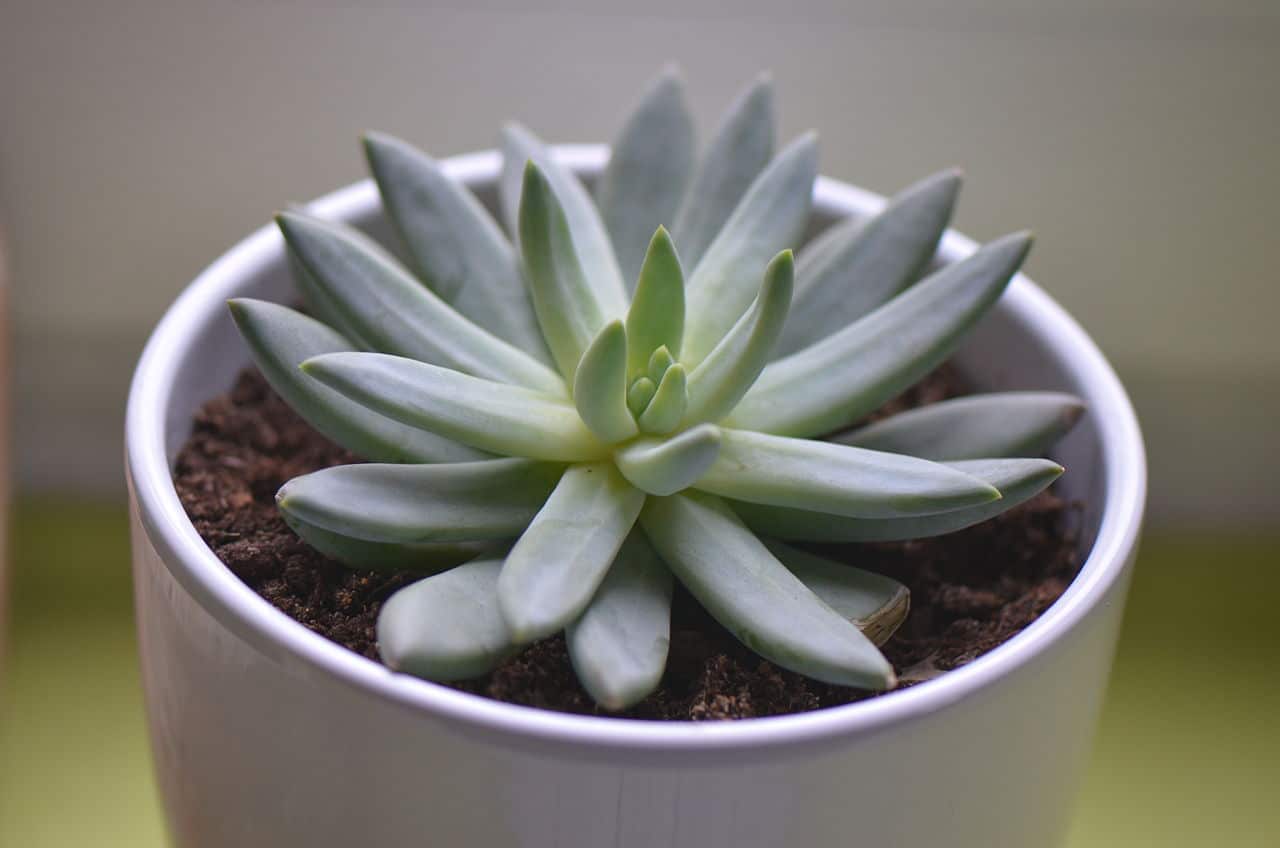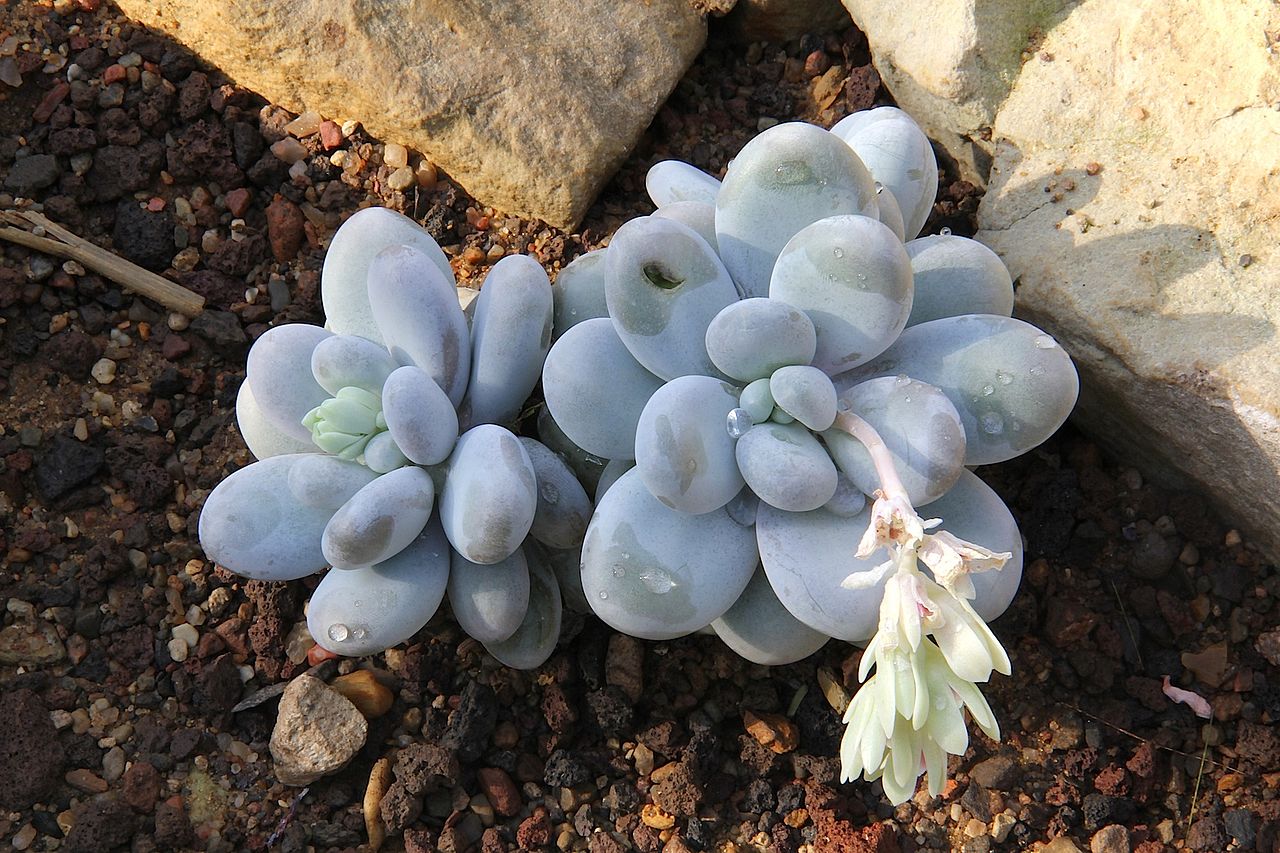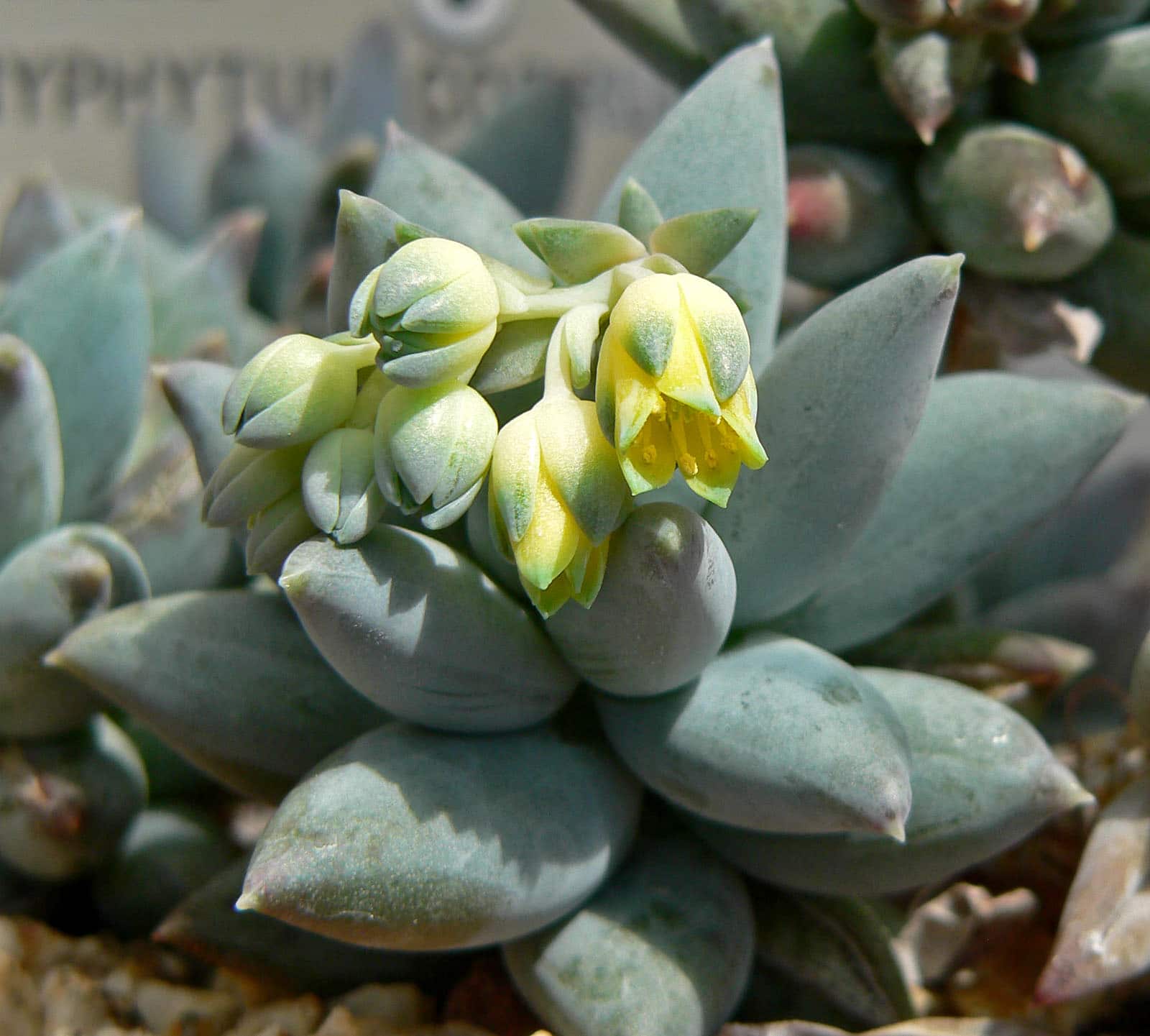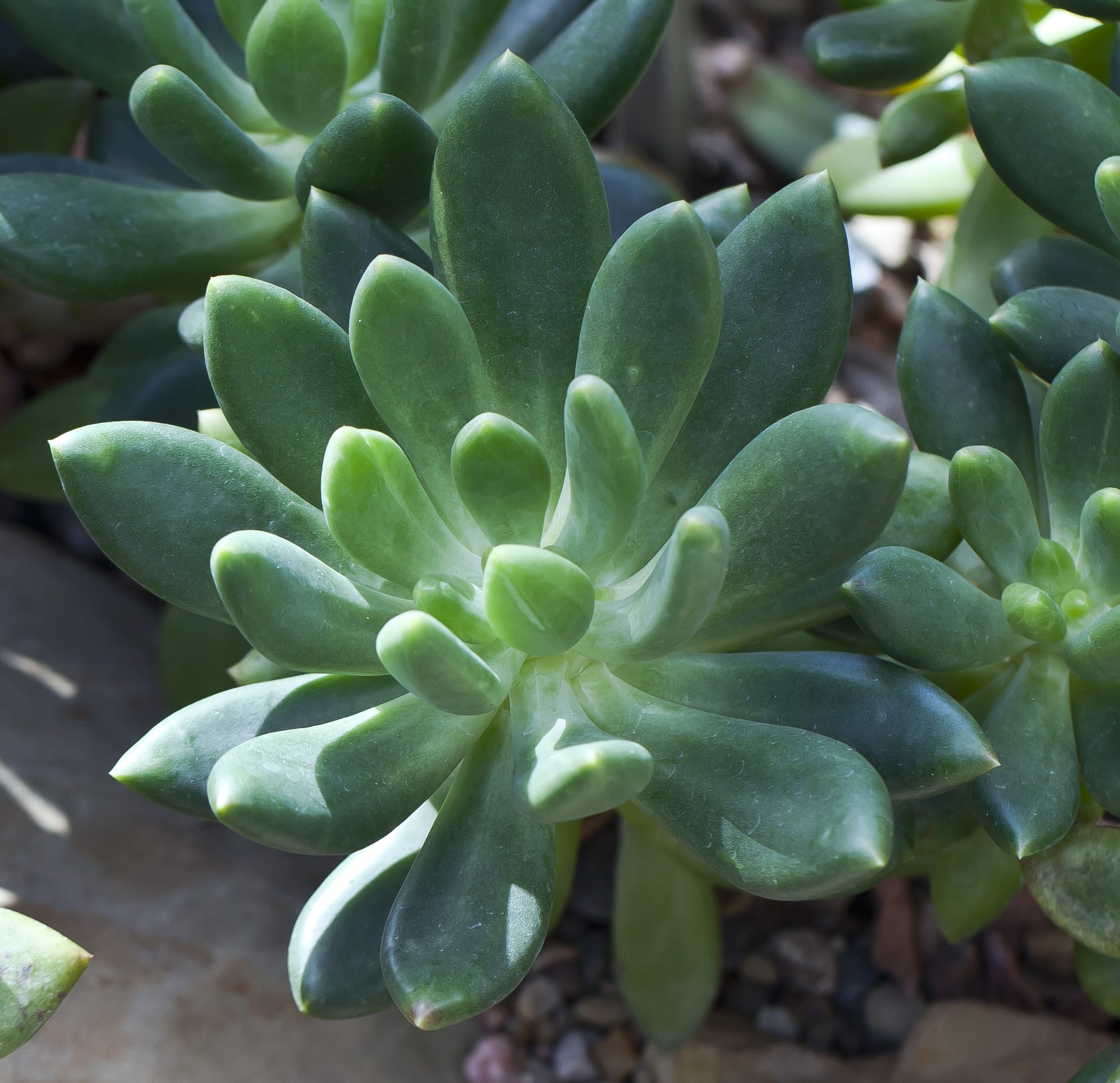
Image - Wikimedia / Jean.claude
The Pachyphytum They are succulent plants that can be used to decorate small spaces, since they have a very high ornamental value and, in addition, they do not grow very much so they are excellent to grow in containers throughout their life.
There are different species, but all of them require the same care and attention so that their health is guaranteed. Do you want to know what they are?
Origin and characteristics of the Pachyphytum
The Pachyphytum grow wild in Mexico, at an altitude above sea level of between 600 and 1500 meters. In general, they are quite small plants, reaching a maximum height of 50 centimeters. Its leaves are succulent, that is, fleshy, since it is in them where they store water, and they can be green, green-glaucous, green-blue, and even more or less pink or purple.
They bloom in spring. From the center of each plant comes a stem about 10 centimeters long, at the end of which the flowers will appear, tiny 1 centimeter, pink, reddish or purple depending on the variety.
Main species
The genus is made up of some 16 accepted species, of which the most popular are:
Pachyphytum bracteosum

Image - Wikimedia / Seacactus 13
El Pachyphytum bracteosum is a plant that reaches a height of 30 centimeters and produces leaves with a size of 6 to 10 centimeters long by 2 to 3 centimeters wide, grayish-green in color, and covered by a whitish powder-like substance. This serves as protection when the degree of insolation is very high. Its flowers are red, and sprout from stems between 15 and 30 centimeters long.
Pachyphytum compactum

Image - Wikimedia / stephen boisvert
El Pachyphytum compactum It is a crass that reaches a height of about 8 centimeters. The leaves are fleshy, grayish-green, and form very compact rosettes. Its flowers sprout from a stem of up to 30 centimeters, and are red.
Pachyphytum oviferum

Image - Wikimedia / Peter A. Mansfeld
El Pachyphytum oviferum It is a crass plant that reaches a height of between 15 and 50 centimeters. It develops elongated green or glaucous leaves, and sometimes they are covered by a kind of white powder. It blooms producing reddish bell-shaped flowers.
How are they cared for?
These are very grateful non-cacti succulent plants, which can be grown both outdoors and indoors taking into account some tips that we will now give you.
Location
- Body exterior:: The Pachyphytum, or pachifitos, will grow well if they are put in a bright area, even in full sun as long as they get used to them little by little and avoid having them exposed during the central hours of the day.
- Interior: inside the house it is important that they are placed in a room where a lot of light enters. If this is not true, one option is to get a plant lamp.
Irrigation
They are plants resistant to drought, but not to flooding. It is best to let the substrate or soil dry completely before watering again.. You can check this with a wooden stick for example, although if you have them in a pot it will be enough to weigh this right after watering it and again after a few days.
By the way, do not wet its leaves or stems, especially if the sun hits them at that time, as they could burn. Also, if you have them in a pot, it is important that it has holes in its base and that no plate is placed under it.
Subscriber

Image - Wikimedia / Stan Shebs
The Pachypchytum grow in spring and summer mainly. They can also do it in autumn if the weather is warm and / or the frosts are weak and late. For this reason, it is highly recommended to pay them during these seasons, since this way you will get them to grow a little faster and, above all, that they do so with health.
As a compost you can use any one that is specific for cacti and succulents, but read the instructions for use so that you do not add more than necessary.
Multiplication
You will get new specimens by multiplying them, in spring or early summer, by seeds, or by leaf or stem cuttings.
Seeds
For Pachyphytum seeds to germinate, They have to be sown in a pot or tray with holes in the base with a mixture of peat and perlite in equal parts. Then water and place the seedbed near a heat source. In this way, and keeping the substrate moist but not flooded, they will germinate in about 5-10 days.
Leaf cuttings
An easier way to getting new specimens is taking a leaf and planting it slightly lying down in a pot with substrate for cacti and succulents. Of course, instead of watering, you have to spray / spray said land with water.
Put the container in a bright area but without direct sun, and you will see that in a few days it will emit roots and new leaves.
Stem cuttings
Pachyphytum multiply very well by stem cuttings. To do it, You only have to cut a stem, let the wound dry for a week, and then plant it in a pot with quartz sand or the like. Finally, water and place the pot in a bright and protected area from the star king.
After about 7-9 days it will emit its roots.
Planting or transplanting time
En spring. If they are in pots, they must be planted in slightly larger ones every 2 years.
Plagues and diseases
They do not usually have, although during the rainy season you have to watch the snails, and during the summer at mealybugs and aphids.
Rusticity
From my own experience, I can tell you that resist weak frosts down to -2ºC. Even so, it is preferable that it does not drop below 0 degrees.

Image - Wikimedia / Diego Delso
What do you think of the Pachyphytum?
Brilliant. Thanks for all this information. I am going to cut my plant because its stems have grown a lot. I will follow your advice.
Thanks to you, Koky.